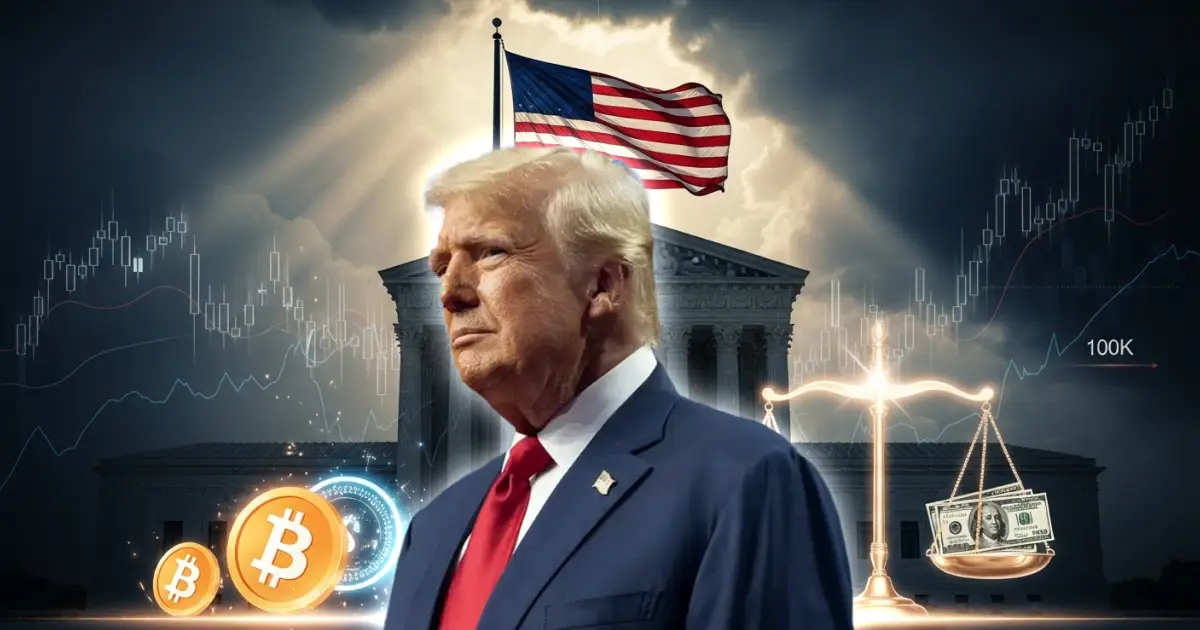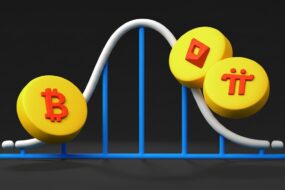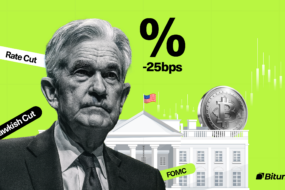
The U.S. Supreme Court is hearing Learning Resources, Inc. v. Trump, a case that could redefine presidential authority to impose tariffs under the International Emergency Economic Powers Act. The outcome may shift more trade authority back toward Congress, alter the legal footing for past and future levies, and reverberate through the U.S. dollar, global supply chains, and digital assets.
Market participants treated oral arguments as a live risk event. U.S. equities were choppy, Treasury yields moved in tight ranges, the dollar stayed firm, and crypto saw brief but sharp swings. Bitcoin slipped below the $100,000 threshold before stabilizing, a reminder that policy and legal uncertainty can tighten financial conditions across risk assets.
What The Supreme Court Is Weighing
The central question is whether IEEPA allows a president to apply broad, ongoing foreign tariffs under a national economic emergency, or whether such measures exceed the statute and constitutional limits on delegated trade powers. Petitioners argue that IEEPA was never intended to function as a standing tariff law. The administration counters that emergency authorities and national security determinations justify the actions.
Several paths are possible. The Court could sharply limit tariff use under IEEPA, preserve much of the status quo, or draw a narrower line that permits targeted sanctions while rejecting open-ended tariff schedules. Each path carries different implications for prior collections, refund risk, and the balance of power between Congress and the executive.
Why This Case Matters For Trade And The Dollar
Tariffs influence import prices, contract terms, inventory planning, and cross-border investment. A decision that narrows IEEPA could constrain future executive-driven tariff programs and invite new litigation. A decision that affirms broad discretion would preserve an executive lever that keeps tariff risk tied to the Oval Office.
The dollar’s reaction is pivotal for global markets. A firmer dollar typically tightens financial conditions, pressures foreign borrowers with dollar liabilities, and weighs on commodities. A softer dollar can ease conditions and support risk appetite. The ruling’s tone and scope will shape dollar expectations and, by extension, liquidity conditions that affect both traditional and digital assets.
Market Snapshot Around The Hearing
Equities traded with a defensive bias as investors reduced exposure to tariff-sensitive sectors. Rates markets signaled caution with shallow curve moves that reflected policy uncertainty more than a clean growth or inflation story. Credit spreads widened modestly. In crypto, intraday wicks on major pairs coincided with headlines from the Court, and derivatives venues showed lower open interest as traders trimmed leverage.
Who Is Driving The Policy Response
While the former president did not attend, cabinet-level economic officials drew attention because any ruling will require swift interpretation and communication to markets. Their guidance will frame whether the outcome implies immediate policy adjustments, a transitional period with clarifications, or legislative engagement with Congress.
Bitunix Analyst View: Key Crypto Levels And Scenarios
Bitcoin’s intraday slide below 100,000 and rebound underscored the market’s sensitivity to legal and policy shocks. Our desk highlights short-term support near 101,400 dollars. A firm break could open a path toward the 98,000 zone, where liquidation clusters may intensify. Overhead, resistance is layered between 115,000 and 117,000. With legal risk intersecting with dollar dynamics, flows appear defensive in the short term and cautious over the medium term. If the ruling amplifies dollar volatility, crypto can behave as a temporary hedge, but volatility in digital assets tends to rise at the same time.
How A Ruling Could Flow Through To Crypto
Dollar and liquidity channel
Crypto often trades as a high beta expression of global liquidity. A stronger dollar and higher real yields usually pressure leveraged positions and reduce risk appetite. A softer dollar can ease conditions and support stabilization, particularly after a deleveraging flush.
Tariff unwind or reaffirmation
A curtailment of IEEPA tariff powers could lower certain import prices over time and nudge inflation expectations down, potentially easing the need for restrictive policy. An affirmation preserves a known policy lever that may sustain a higher uncertainty premium in trade. Both paths affect the backdrop that crypto trades against.
Path dependency
Markets will key off the details. A narrow ruling that changes little may keep crypto range bound. A sweeping decision that redefines executive boundaries could spark cross-asset realignment, including renewed volatility in Bitcoin, Ethereum, and large cap altcoins.
What To Watch Next
Signals from oral arguments
Listen for questions about congressional intent, the scope of national emergency in economic contexts, and how the justices frame limits on delegated tariff power. Narrow tailoring language would point to a middle path. Broader separation-of-powers language would point to a larger shift.
Dollar and rates
Monitor the dollar index and Treasury real yields. Sustained dollar strength and rising real rates typically weigh on crypto. A softer dollar with steady or falling real rates often supports stabilization or recovery.
Positioning and funding
After legal shocks, derivatives markets often deleverage. Neutral to negative funding rates and falling open interest can set the stage for a base once excess leverage clears, but trend direction still depends on macro headlines.
Strategic Takeaways For Investors
Maintain risk controls
Avoid excessive leverage while the legal outcome remains a coin toss. Use position sizing, stop levels, and a written plan that you can follow under stress.
Build a liquidity buffer
Hold a sleeve of stable assets so you can act without forced sales. Productive cash management can sit in flexible savings while retaining fast access.
Track macro indicators
Pay attention to the dollar index, Treasury yields, funding spreads, and policy guidance. Crypto is now integrated with macro, and the liquidity regime tends to dominate short-term performance.
Focus on process over prediction
Treat the ruling as one event inside a longer policy cycle. Range trading tactics may fit the current environment. Long-term investors can use weakness to accumulate quality positions if their thesis and risk rules allow.
Conclusion
Learning Resources, Inc. v. Trump is a high-stakes test of executive tariff powers under IEEPA. The decision will shape trade policy boundaries, influence the dollar and inflation expectations, and ripple through global risk appetite. For crypto, the link is indirect but powerful. Dollar liquidity and policy clarity remain the primary drivers. Respect key levels at 101,400 on support and 115,000 to 117,000 on resistance, keep risk tight, and let process, not headlines, guide allocation.
About Bitunix
Bitunix is a global cryptocurrency derivatives exchange trusted by over 3 million users across more than 100 countries. At Bitunix, we are committed to providing a transparent, compliant, and secure trading environment for every user. Our platform features a fast registration process and a user-friendly verification system supported by mandatory KYC to ensure safety and compliance. With global standards of protection through Proof of Reserves (POR) and the Bitunix Care Fund, we prioritize user trust and fund security. The K-Line Ultra chart system delivers a seamless trading experience for both beginners and advanced traders, while leverage of up to 125x and deep liquidity make Bitunix one of the most dynamic platforms in the market.
Bitunix Global Accounts
X | Telegram Announcements | Telegram Global | CoinMarketCap | Instagram | Facebook | LinkedIn | Reddit | Medium
Disclaimer: Trading digital assets involves risk and may result in the loss of capital. Always do your own research. Terms, conditions, and regional restrictions may apply.









